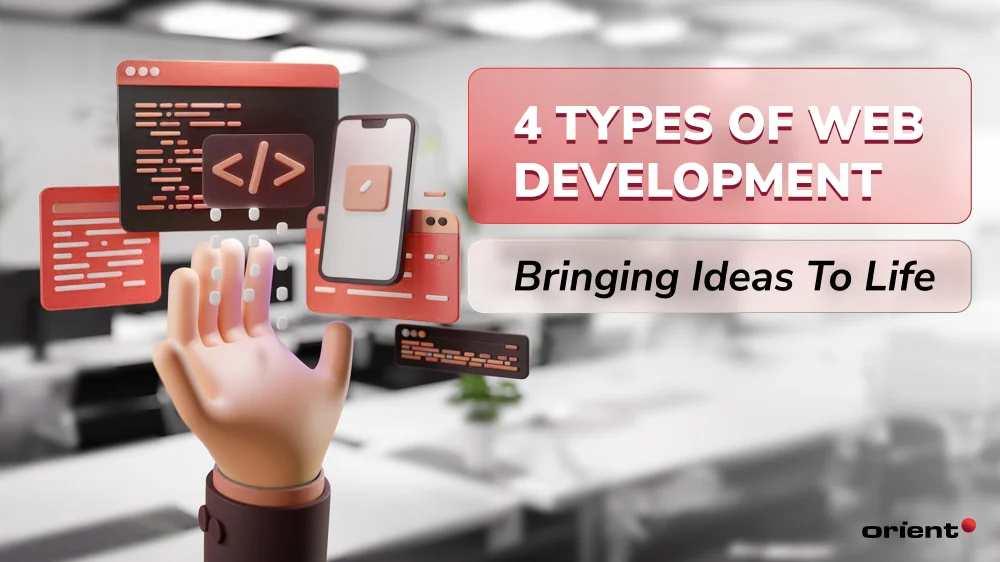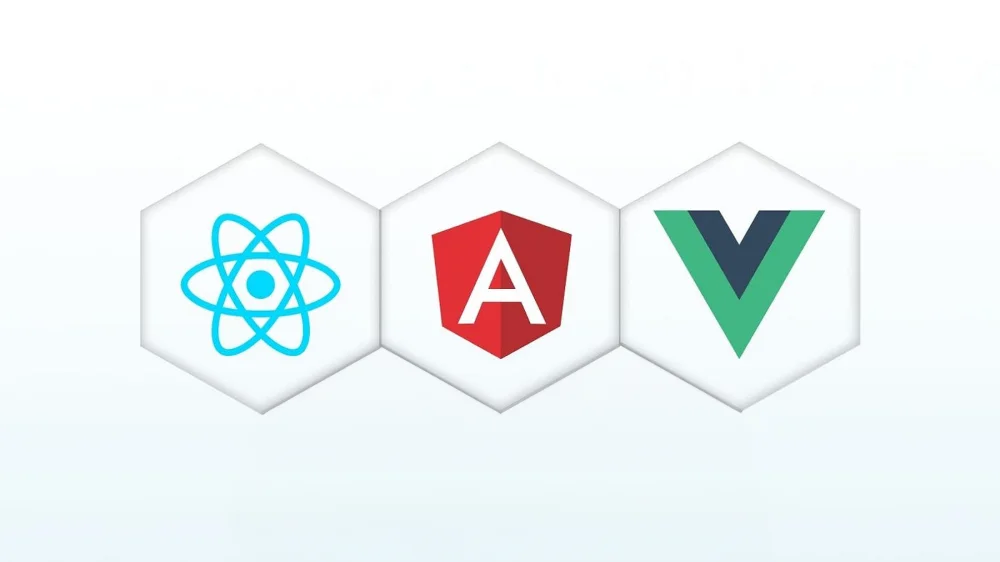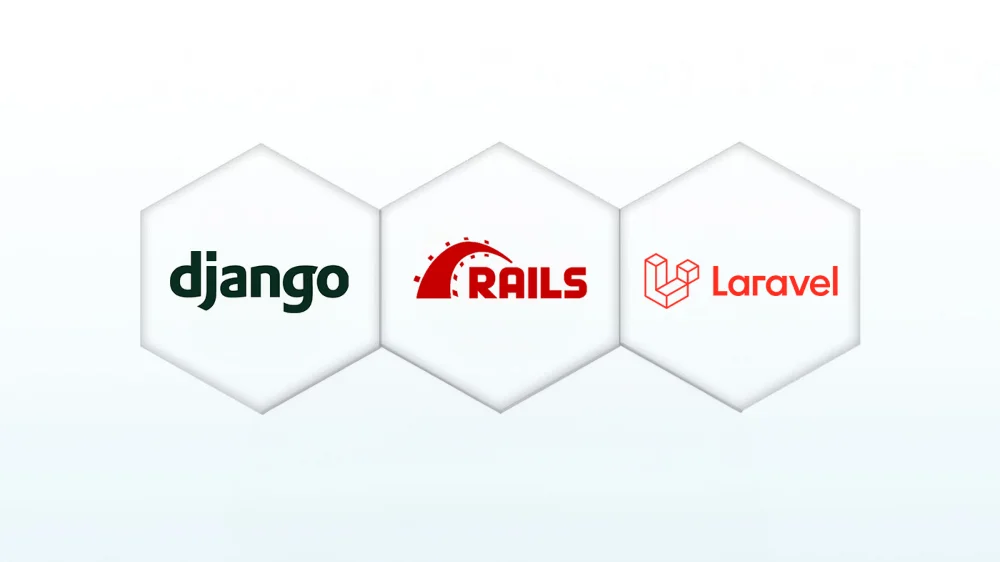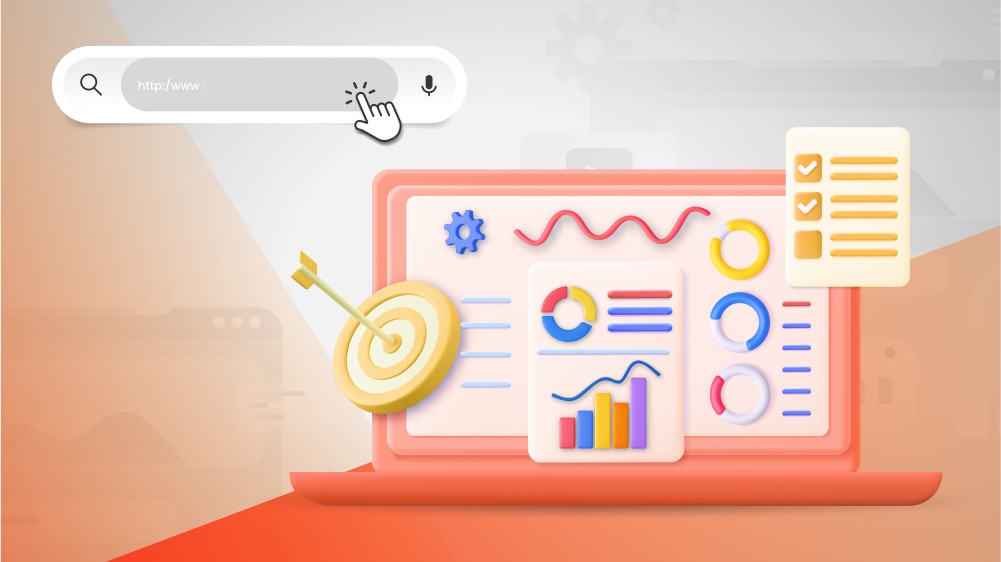
Types of Web Development: Bringing Ideas to Life

Content Map
More chaptersWeb development is the art of bringing ideas to life. Although it is typically associated with writing codes, it involves a variety of processes, including web design, programming, and database management.
As with any other form of art, there are several ways a web developer can go about it. This article will serve as a guide to all the web development types and their related technologies. Let’s begin!
Key Takeaways:
- There are three main types of web development, including:
- Front-end: involves what users see and interact with.
- Back-end: the technology that keeps the website running
- Full-stack development, including front-end and back-end development
- There are other approaches to web development like static site development, content management systems, single page applications or progressive web apps.
- Depending on the project’s specific requirements, target audience, and complexity.
Web Development Overview

Web development is the process of creating, building, and maintaining websites and web applications. It involves coding and programming to ensure that websites work properly and offer a good user experience. Web developers build these sites and applications using different programming languages, such as HTML, CSS, and JavaScript. Their job includes designing the layout, managing databases, and ensuring the website functions well on the Internet.
In today’s article, we will focus on three main types of web development,
- Front end,
- Back end,
- And full-stack web development.
This article also examines approaches or specialized categories within web development, which are:
- Static Site Development
- Content Management Systems (CMS)
- Single-Page Applications (SPAs)
- Progressive Web apps (PWAs)
Understanding Front-end Web Development

Front-end web development, or client-side web development, refers to everything that users see and interact with. A front-end developer is responsible for creating an intuitive user interface by using mark-up programming languages like HTML, CSS, and JavaScript. They often work closely with the web designer team to deliver high-quality user interfaces. We will zoom in on each of these mark-up programming languages and several famous frameworks and libraries in front-end development.
Programming Languages
HTML
HTML is short for Hyper Text Markup Language. With HTML, front-end developers structure the website’s content, including the text, images, headings, and hyperlinks. Most static websites are created using HTML codes. However, HTML alone cannot create responsive websites. This is when other languages like CSS and JavaScript come into play.
CSS
CSS stands for Cascading Style Sheets. While HTML takes care of the website’s structure, CSS defines the visual style of the website. This includes the background, layout, colors, animation, fonts, spacing, etc.
JavaScript
The next step after defining a web’s structure and overall style is to make the website functional. This means, for example, making a button clickable or refreshing text on the website without reloading the entire web page. With JavaScript, you can extend the website’s interactivity. As users are used to smooth and dynamic experiences on websites, having a dynamic website is a must to attract and keep users engaged.
Front-end Framework

Even though front-end frameworks aren’t strictly required for the web development process, they’re highly beneficial as they can speed up the development process significantly. There are an array of frameworks, but we will only explore the top 3 most popular front-end web development frameworks, according to a 2023 Stackoverflow survey.
React
React was the most popular and desired front-end framework in the Stack Overflow survey. Developed by Facebook, React is known for breaking down a website’s components into reusable parts, also known as the component-based architecture. React is a top choice for building dynamic and fast user interfaces for its ease of applying changes.
Angular
With popular sites like Google or Forbes using Angular, it is known for building complex web apps. Angular was developed by Google and offers a range of tools for building enterprise-level applications.
Vue.js
Vue.js is famous for being lightweight and beginner-friendly. Its gentle learning curve is partly attributed to its simple API and component-based architecture, making it a great choice for both big and small website development projects.
Understanding Backend Web Development

While front-end development involves everything users can see and interact with, back-end development involves all the coding that happens behind the scenes. Also known as server side web development, it is responsible for building and maintaining the codes that run the website. Back-end developers ensure that the data is connected to the server properly and the data flow during transactions flows seamlessly. Here is a quick look at the most common back-end web development language.
Programming Languages
Java
Java has a large presence in many of the web development projects. It is an object-oriented programming language (OOP) with an established library and framework. One of its strengths is that it runs on the Java Virtual Machine (JVM), making it highly portable and compatible across different systems. It is a go-to choice for building a variety of apps, especially when it comes to processing-intensive tasks in large applications’ backends.
Python
Even though Python is best known for data processing and machine learning, it has always stayed in the top 5 most common programming languages for web projects. Thanks to being beginner-friendly, having a syntax that closely resembles the English language, and its robust and massive community, Python is a top choice for aspiring developers. In 2022, 46% of developers use Python for web development. The programming language also stands out for its frameworks, like Django and Flask.
PHP
PHP is another programming language with a mature ecosystem but a shorter learning curve. It is a powerful tool for creating websites with dynamic web pages and eCommerce sites. The language’s ability to integrate with various databases, including MySQL, PostgreSQL, and MongoDB, provides developers with flexibility in building their desired applications.
Back-end Frameworks

Similar to front-end web development, frameworks are not strictly needed to build a website. However, using back-end development frameworks can lead to consistency, efficiency, and the enforcement of the best practices in writing code.
Django
A superhero in the world of Python web development, Django follows the MVC pattern to ensure a solid and clean structure for the web app. The framework also utilizes the DRY (Don’t Repeat Yourself) principle, which means writing less code by reusing parts of it to speed up the web project and minimize errors and bugs.
All in all, it is a robust toolkit to build high-quality websites efficiently.
Ruby on Rails
Ruby on Rails is an open-source, general-purpose programming language, but it is best known for its developer-friendly environment for web development. This framework also utilizes the MVC pattern, along with the DRY and CoC Principles. The CoC (Convention over Configuration) principle provides sensible defaults, so developers can spend more time building rather than configuring.
Laravel
Laravel, an open-source PHP backend framework, makes web development faster and more efficient. Thanks to its developer-friendly tools that simplify tasks like database management and routing, built-in features for security, and elegant syntax, Laravel provides developers with everything they need to build a robust application with ease.
Understand Full Stack Web Development

Full-stack development refers to a comprehensive approach that involves building both the front-end (user interface) and the back-end (server-side logic and database) of a web application. Full-stack developers handle all aspects of the development process, from designing the user experience to managing data and server operations.
When it comes to this type of web development, developers typically use web development stacks like MEAN, MERN, MEVN or LAMP.
MEAN
MEAN is an acronym for the technologies that make up the stack. In particular, MEAN stands for:
- MongoDB: NoSQL database
- Express.js: Web application framework.
- Angular: Frontend framework.
- Node.js: JavaScript runtime.
The MEAN stack is a well-liked web development technology stack made specifically for JavaScript and intended to construct scalable, quick, and robust applications. Made up of four open-source components that work together seamlessly, MEAN allows efficient data exchange through JSON and provides access to a rich library of modules. MEAN is ideal for developing single-page applications and real-time web apps, making it a powerful and cost-effective solution for modern web development.
MERN
MERN is similar to the MEAN stack, but it uses React as its front-end development tool rather than Angular.
- MongoDB
- Express.js
- React: Frontend library
- Node.js
This stack enables smooth data flow, leverages a robust ecosystem, and promotes the use of reusable components through React’s component-based architecture, making it highly efficient for any web development project.
MEVN
Instead of using Angular or React as the front-end framework, MEVN utilizes Vue.js.
- MongoDB
- Express.js
- Vue.js: Frontend framework
- Node.js
Each front-end framework holds its strengths and merits, and Vue.js has been gaining traction for its versatile ability, readable codebase, and high speed.
LAMP
- Linux: Operating system
- Apache: Web server
- MySQL: Relational database
- PHP: Server-side scripting language
If you are a full-stack developer looking for a stack with the highest performance but with the lowest cost possible, LAMP is the way to go. Every component in this stack is open-source, and its active community works regularly to maintain its source code. With Windows choices available as WAMP and Mac variants as MAMP, this technology stack provides free, interchangeable, and platform-neutral open-source software components.
Four Other Approaches in Web Development

In addition to the three most common categories of web development, there are four extra approaches a developer can take in web development.
Static Site Development
Static site development involves creating websites made up of pre-built HTML, CSS, and JavaScript files that are delivered directly to the user’s browser without any server-side processing or databases. Developers typically use Static Site Generators (SSGs) such as Jekyll, Hugo, and Gatsby to streamline the process of building and managing these static websites.
Content Management Systems (CMS)
Popular platforms like WordPress or Drupal allow users to create, edit and organize websites without the need of extensive programming skills. Businesses can choose from ready-made options like WordPress or Wix or opt for custom CMS at a higher cost but tailored to specific user needs.
Single-Page Applications (SPAs)
SPAs are web applications that dynamically update the current page with new data from the server instead of reloading entire pages.
We often encounter SPAs in our daily online activities. Examples include Gmail, Google Maps, Airbnb, Netflix, Pinterest, and PayPal. With their ability to create fluid and scalable user experiences, it’s no wonder that companies across the internet are embracing SPAs as a key component of their web development strategies.
Progressive Web apps (PWAs)
Progressive Web Apps are bringing together the best of web and mobile apps. They resemble webpages but provide features like native mobile apps - including offline operation and hardware leveraging. PWAs are an essential part of the digital world, providing users with seamless user experiences with push notifications, offline access, and intuitive navigation. Starbucks and Pinterest are two well-known PWAs.
Factors to Consider When Choosing the Type of Web Development
Multiple factors come into play when choosing a web development approach.
- Project Requirements: Think of the project’s features and complexity.
- Project Timeline: Be realistic about the project’s deadline.
- Target Audience: Keep your users in mind during the selection process.
- Budget: When choosing an approach for the project, make sure it fits your budget.
- Maintenance: think of the site’s maintenance in the future and how you can make it easy.
Last but not least, Don’t hesitate to consult professionals! Sometimes, with all these factors thoroughly considered, you might still feel overwhelmed and confused. That’s where experts like Orient Software come in. We handle the heavy lifting, ensuring a seamless process while providing you with valuable insights and guidance every step of the way! Let us help you navigate the complexities of your project so you can achieve the results you desire!






